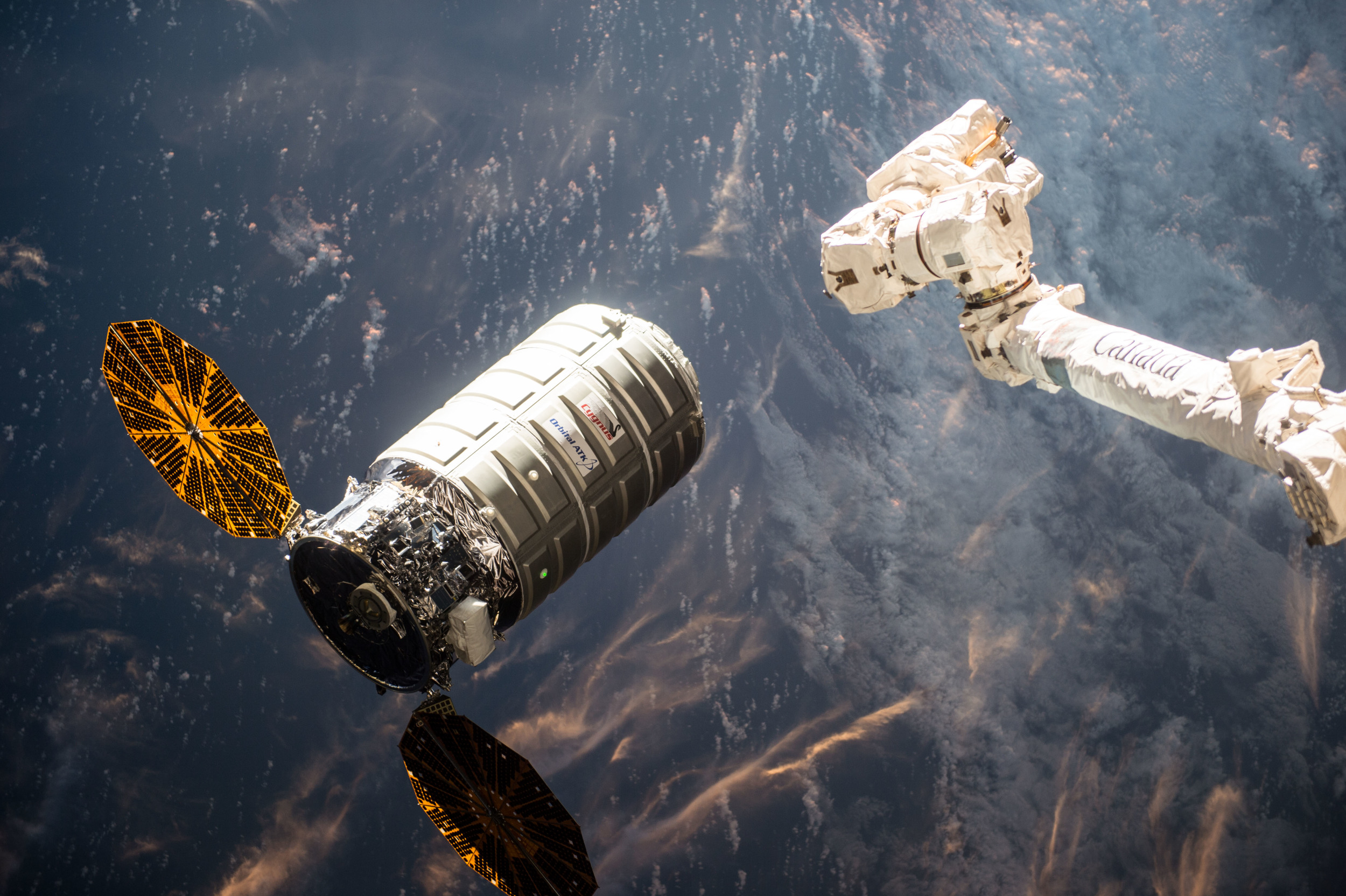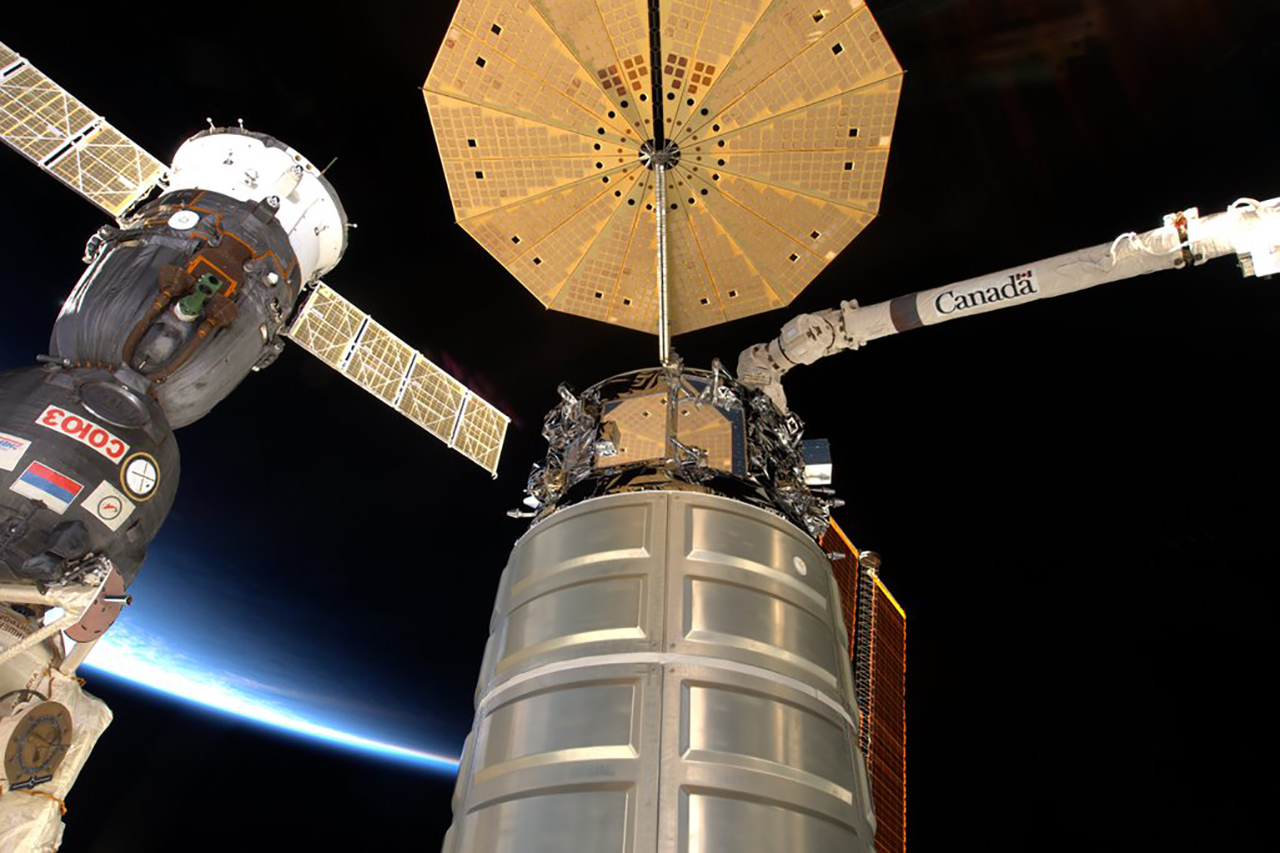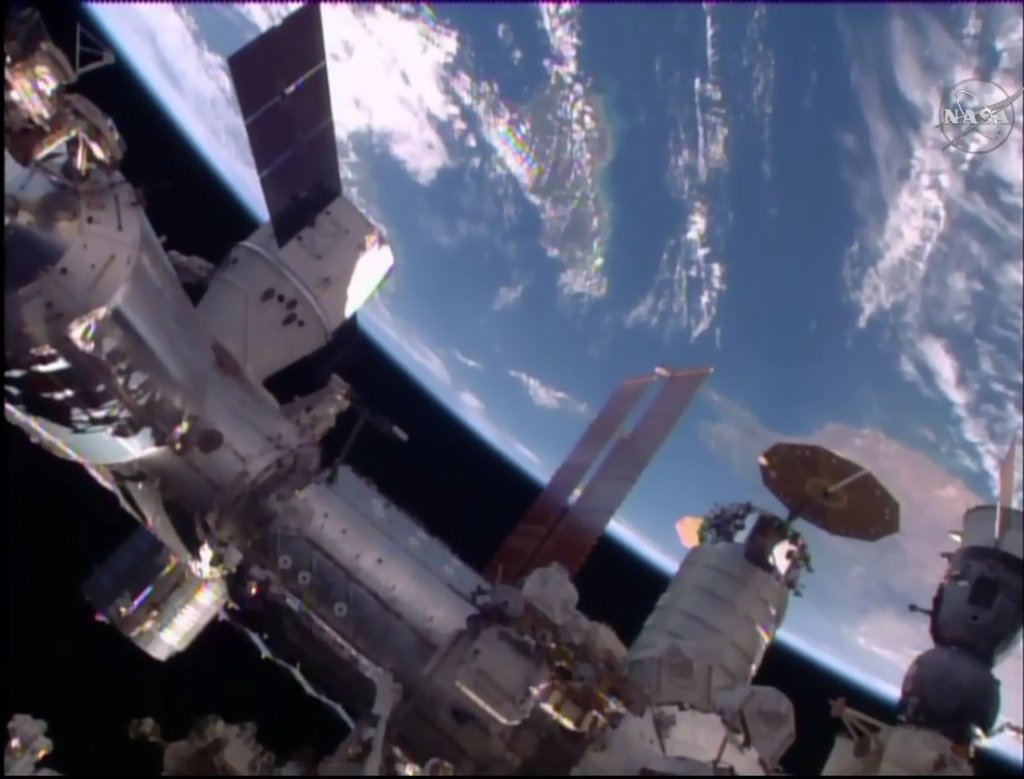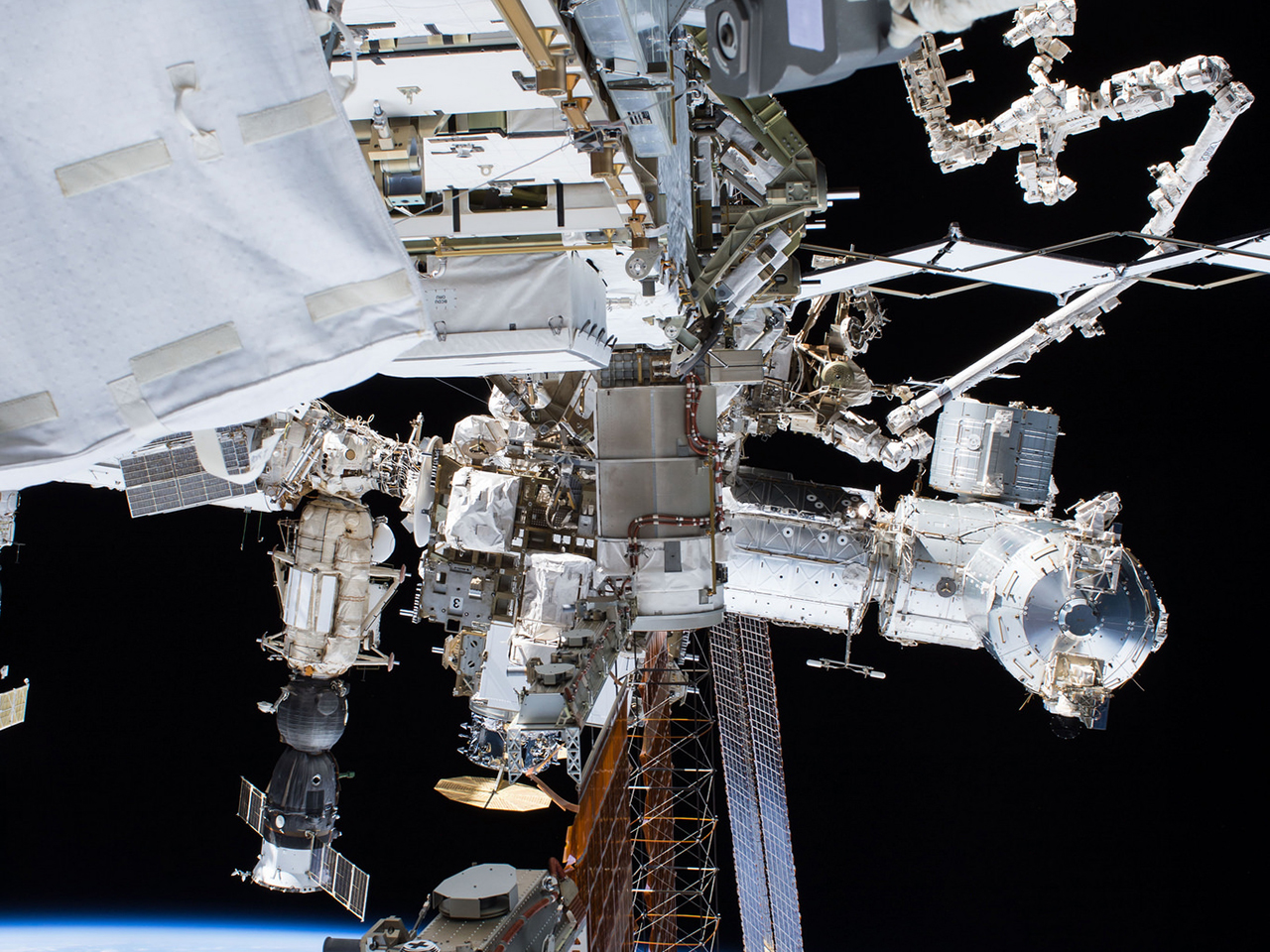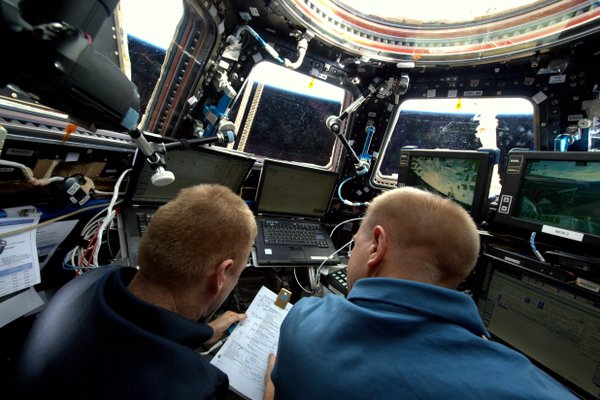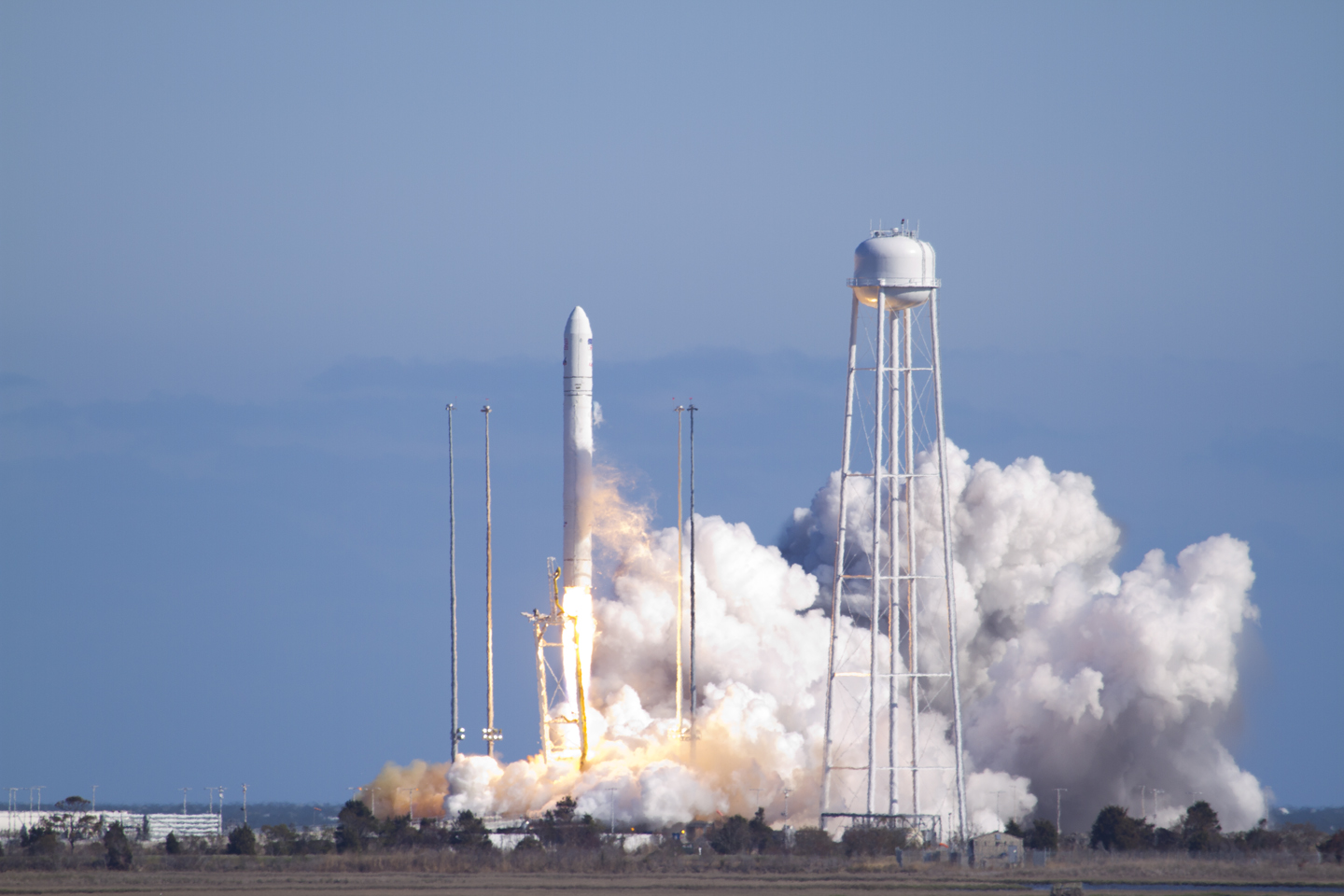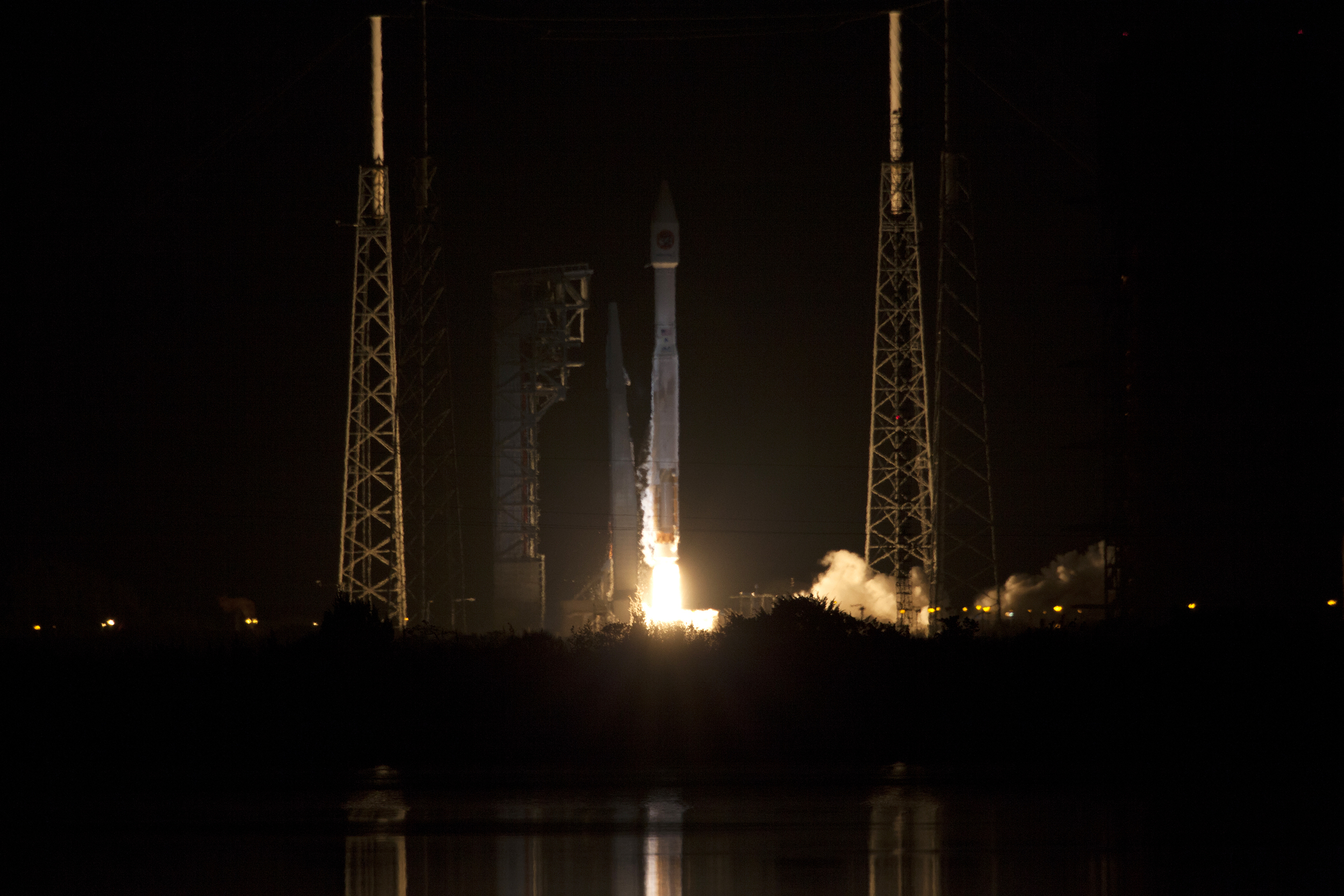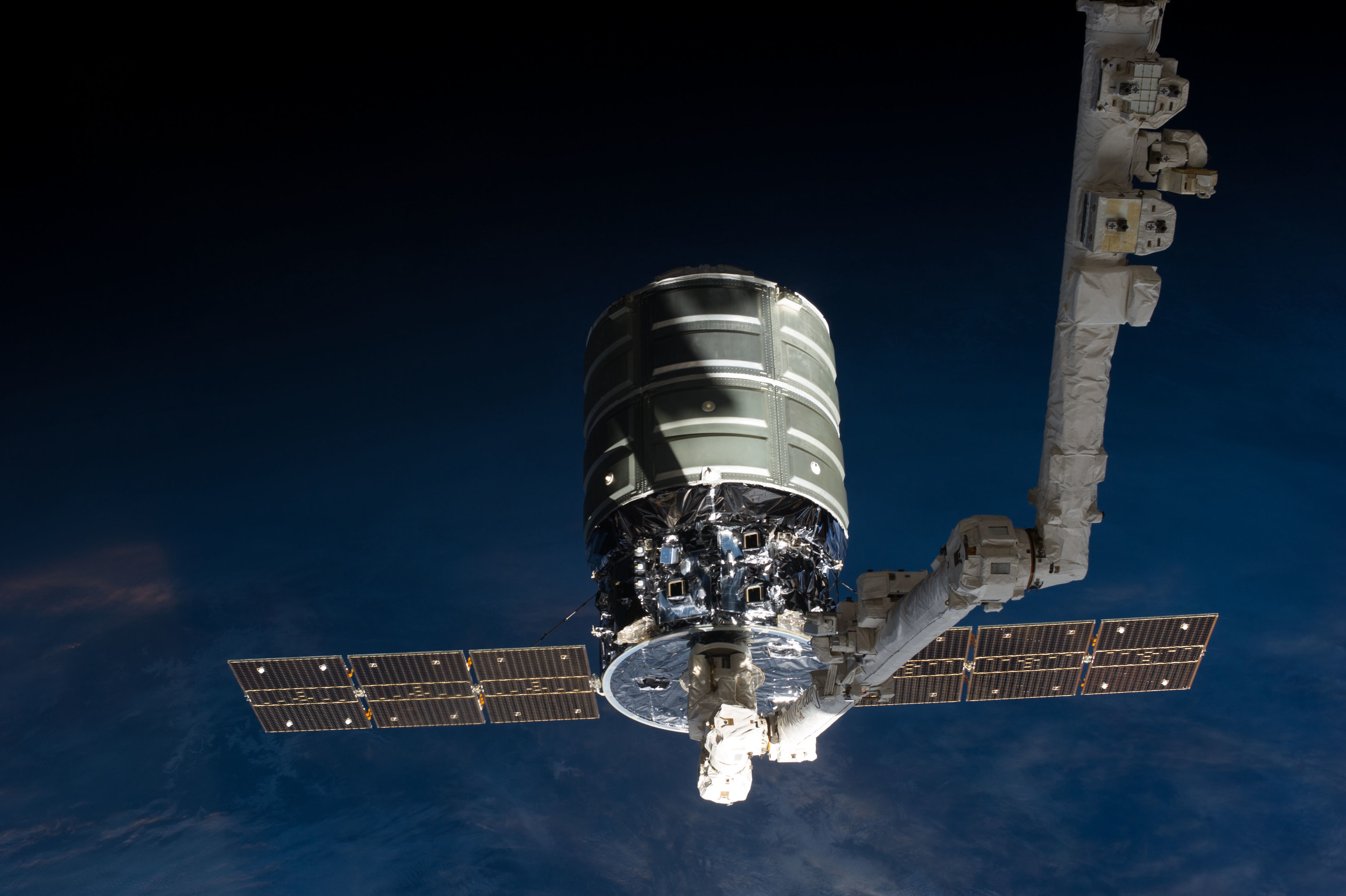A second commercial supplier means redundancy
Cygnus was originally developed by Orbital Sciences as part of NASA's Commercial Orbital Transportation Services program. It currently serves as one of two commercial suppliers for the International Space Station.
The first flight occurred in September 2013. An enhanced version, with a stretched pressurized section and circular UltraFlex solar arrays, began flying in 2015.
It is launched by either an Atlas 5 or Antares rocket, the latter was also developed by Orbital Sciences. Once Cygnus rendezvous with the orbiting outpost, it is grappled and "berthed" to an Earth-facing port, usually on the Unity module.
After being unloaded of its cargo, trash and other unneeded equipment is packed inside the spacecraft. After a couple months attached to the station, it is unberthed and sent on a fiery destruction over the Pacific Ocean.
The spacecraft can also serve as a free-flying platform for experiments to be remotely conducted. This is done after its initial ISS resupply mission.
After several mergers and acquisitions, Cygnus and Antares are now built and flown by Northrop Grumman.
— Quick facts —
Basics
Country: United States
Operator: Northrop Grumman
Manufacturer: Northrop Grumman
Launch site: Mid-Atlantic Regional Spaceport, Virginia; Cape Canaveral Space Force Station, Florida
Launch vehicle: Antares 230+; Atlas 5 401
Reusable: No
Status: Active
Specifications
Dry mass: 3,600 kg
Height: 6.39 m
Width: 3.07 m
Max. cargo: 3,750 kg
Return payload: ~3,750 kg via destructive reentry
Orbital life: Up to two years
Flight history
First flight: Orb-D1, Sept. 18, 2013
Number flown: 18 as of August 2022
Variants: Standard (2013-2014), Enhanced (2015-present)
Failures: Orb-3 in 2014
Stations serviced: ISS
— Sections —
Pressurized Cargo Module
Width: 3.07 m
Max. Cargo: 3,750 kg
Cargo volume: 27 m³
The Pressurized Cargo module was manufactured by Thales Alenia Space in Turin, Italy. The first four Cygnus spacecraft, the Standard version, had a smaller 18.9-cubic-meter module. The Enhanced version, which started flying in 2015, has a 27-cubic-meter module.
The PCM is similar in design to the Multi Purpose Logistics Modules that serviced the International Space Station, albeit smaller. It is attached to the station via a Common Berthing Mechanism at the top of the ship.
Once berthed to the space station, the crew enters the spacecraft from the CBM to unload the cargo. The Standard version held up to 2,000 kilograms of supplies, food and experiments. The Enhanced holds between 3,200 and 3,500 kilograms, depending on the launch vehicle used.
After the ship is emptied of cargo, it is loaded with trash and other unneeded equipment. Also sometimes located inside are experiments that need to be conducted remotely. An example of this are the SAFFIRE experiments, which study the spread of flames in microgravity. While the experiment is remotely conducted inside a specialized container, as an added safety precaution, it is performed after the spacecrafts ends its cargo mission and is at a safe distance from teh International Space Station.
Service Module
Mass: 1,800 kg
Width: ~3 m
Width (w/ solar): ~11 m
Built by Orbital ATK, the Service Module is based of the company's GEOStar and LEOStar spacecraft buss. It has a mass of 1,800 kilograms.
For propulsion, the SM uses the hypergolic propellants hydrazine and nitrogen tetroxide. The Standard version of Cygnus utilized two traditional solar panels while the Enhanced version sported Orbital ATK's new circular UltraFlex solar arrays.
The new solar arrays provide the same amount of power as the Standard version, 4 kilowatt hours, but with lower mass.
At the bottom of the SM is a grapple fixture that allows for the International Space Station's robotic Canadarm2 to attach to during rendezvous and capture operations. Once the arm has a firm grip, it moves Cygnus to one of two Earth-facing ports beneath the space station: either the Harmony module or Unity module.
The more recent SMs have had special External Cygnus CubeSat Deployer in order to "launch" up a multitude of CubeSats after the completion of the spacecrafts mission at ISS.




